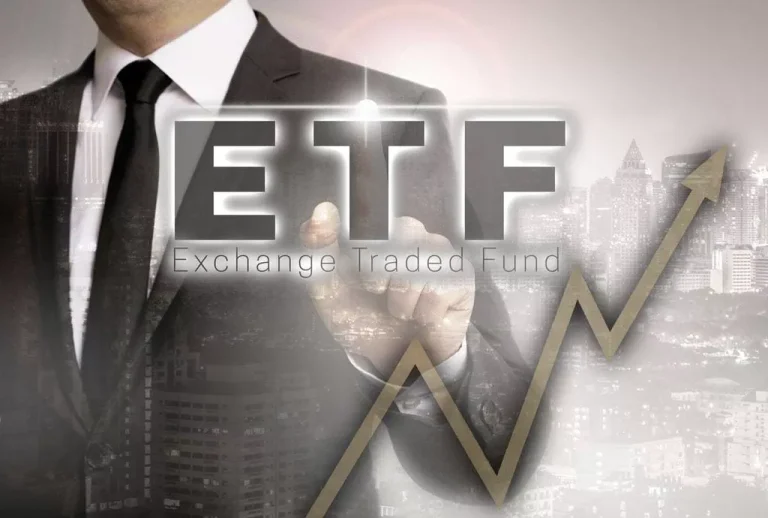Similarly, blockchain networks find it tough to stability security, scalability, and decentralization optimally. It’s especially true for Proof of Stake (PoS) based mostly blockchain protocols. The underlying design of PoS enhances the scalability part but leaves behind decentralization.

And if their validator gets to validate a block, the reward is cut up proportionately amongst all of the customers who voted for him. This is in fact after the validator takes his share of the income. Once you enter the game and a block is up for validation, the network randomly chooses a validator to carry out this task.
Get Up To Date On The Most Recent Content Material
Simply said, the Beacon Chain is being built-in with a quantity of testnets through these mergers. As a result of the merger, Ethereum is currently actively developing a PoS mechanism. You can purchase Ethereum with zero trading fees till December 14th on ZebPay. Read extra about the latest happenings within the crypto market on ZebPay blogs. The sort of blockchain you invest in is decided by your investment technique and targets. Both have advantages and downsides, so you have to choose accordingly.

Compared to PoS, DPoS improves the level of decentralization within the community. Hence, the voting process helps guarantee accountability among them, and they are made to behave honestly to be retained. Unlike witnesses, validators are not financially incentivized. DPoS contains different parts that allow the algorithm to validate the transaction successfully and effectively. A series of « merges » with testnets marked the beginning of the second phase earlier in 2022. In September 2022, a merge with the Ethereum mainnet is planned to complete it.
Sign In To Read The Total Article
Today, we talk about a few of the primary benefits of switching from PoW to PoS. Users already pay exorbitant petrol costs, endure prolonged transaction affirmation delays, and use a considerable amount of power in the course of. When Ethereum 2.zero was first being developed, sharding was intended to be included in Phase 1.
You ought to often verify the standing of your validator node to make sure it remains on-line and functional. Inactive or misbehaving validators might lose some or all of their staked ETH because of slashing. Slashing can happen if you engage in malicious conduct or neglect your duties. Since there are a quantity of validators for every block, blockchains have a threshold for the number of validators who need to agree on its legitimacy for it to be added. In most blockchains, if two-thirds of the validators agree on including the block, then it is passed. In Cosmos, the witnesses are called ‘Validators.’ There are one hundred validators assigned to verify network transactions.
- It’s an eco-friendly various to mining, as it doesn’t devour substantial amounts of vitality.
- In conclusion, becoming a validator in Ethereum 2.0’s community offers a possibility to contribute to community security and earn rewards through staking.
- After sharding, there will be multiple chains running parallel.
- While you’d vote for delegators in a DPoS mechanism, here there are no votes.
- This is of course after the validator takes his share of the income.
Ethereum WebAssembly, often generally known as eWASM, might be unveiled throughout Phase 2. The World Wide Web Consortium developed WebAssembly to make Ethereum considerably more practical than it is now. For the execution layer of Ethereum’s sensible contracts, a deterministic subset of WebAssembly called Ethereum WebAssembly has been advised. The Ethereum 2.0 improve is difficult, and it has taken the brightest brains and the best efforts to get it via. The phrase « Ethereum 2.0 » is used to refer to a number of updates to the Ethereum network that handle a number of the most important technical issues it now faces.
On the other hand, if the witness doesn’t validate every transaction within the stipulated time, they won’t receive a reward. Typically, the compensation for a failed witness is allocated to the subsequent witness if they verify all transactions successfully. The Ethereum network’s lack of scalability has an influence on more than just easy transactions.
How Will Proof-of-stake Make Money?
Compared to the validation competition of the Proof-of-Work mechanism, Proof-of-Stake is a validation-sharing course of. In the previous mechanism, miners compete to unravel mathematical problems to mine the blocks. They verify actions, check transactions, keep records and vote on outcomes. Every blockchain uses a consensus mechanism to validate transactions on its network.
PoS is a widely known, energy-efficient different to the Proof of Work (PoW) launched by Bitcoin. Without a doubt, DPoS doesn’t intently favor a specific set of customers (like PoS). However, because it requires fewer delegates to handle the community, the question of whether or not it genuinely is decentralized arises. Also, these chosen candidates could be voted out of the system at any level in case of malicious behavior. For example, there’s scope for forming delegate cartels through which the delegates can allocate validation energy to chose witnesses.
DPoS protocol sometimes requires only 20 to a hundred witnesses to deal with the network. A limited variety of witnesses can shortly attain a consensus in comparability with algorithms like PoW and PoS. PoW algorithms are used Ethereum Proof of Stake Model in most blockchains similar to Bitcoin, Ethereum, and Litecoin. These algorithms create a trustless system, where all people on the network can trust the system and no one has to belief one person or one group.
This helps these networks run as automated techniques on a worldwide scale with none single governing authority. Mining on proof-of-work powered blockchains requires large specialised gear. Recently, the Ethereum blockchain platform totally transitioned from ‘proof of work’ to a ‘proof-of-stake’ consensus mechanism and this revamp is called the Merge.
DPoS allows customers to vote for candidates to validate community transactions. These validators are called ‘Super Representatives’ and are chosen each six hours. It is a mechanism by which miners act as validators of transactions on the community. Miners compete with one another to validate a block by fixing complex cryptographic puzzles.
What’s Proof-of-stake In Blockchain?
This prompts customers to try and acquire probably the most powerful hardware and dominate the blockchain. By its nature, it promotes individuals to attempt to collect extra energy on the blockchain. Delegates are another set of stakeholders throughout the DPoS system. The users vote for the delegates to oversee governance inside the blockchain. Delegates can suggest recommendations like changing the variety of witnesses, altering the dimensions of a single block, etc. The customers then vote on these suggestions and choose the one with the very best vote depend.
There is at all times some media outlet running their ‘special’ on environmental concerns of Bitcoin mining. It’s necessary to carefully assess these risks and think about your monetary state of affairs and risk tolerance earlier https://www.xcritical.in/ than deciding to stake ETH. Diversifying your investments and conducting thorough analysis are advisable methods to mitigate a few of these dangers. In the EOS network, every user can vote for as much as 30 candidates, and the highest 21 are chosen.
How Is Dpos Different From Pos?
Even in relation to processing speed, not much improvement is expected. Right now, ETH’s primary PoS chain i.e Beacon provides a brand new block each thirteen.3 seconds. And since velocity on Layer 1 will stay the identical, nothing is about to alter as such. For one, there’s about 99.95% much less vitality consumption on the way.
The shift to Ethereum 2.0 is full with sharding, which comes after merges. It has taken years for Ethereum 2.0 to develop, subsequently it’s hardly an abrupt change. The Beacon Chain’s debut in December 2020 marked the beginning of this process because it made it attainable to stake Ether, the Ethereum community’s native coin. ETH 2.0 just isn’t a unique token, but the identical token on an upgraded blockchain. ETH 2.0 just isn’t a unique coin, but the identical token on an updated blockchain.
With the speedy rise in the number of crypto customers, the network was simply unable to keep up. But further development is necessary for Ethereum to reach its full potential. Constant innovation is what is going to cement Ethereum because the dominant project in the business. Bitcoin is infamous for the amount of electricity it makes use of. Bitcoin mining is estimated to devour as much electrical energy as the complete nation of Argentina.
